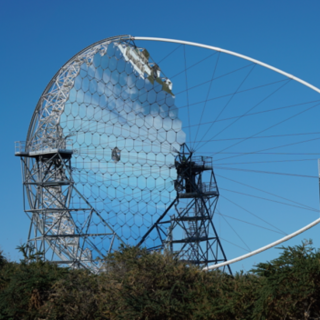Bibcode
Abe, K.; Abe, S.; Abhishek, A.; Acero, F.; Aguasca-Cabot, A.; Agudo, I.; Alispach, C.; Ambrosino, D.; Ambrosino, F.; Antonelli, L. A.; Aramo, C.; Arbet-Engels, A.; Arcaro, C.; Arnesen, T. T. H.; Asano, K.; Aubert, P.; Baktash, A.; Balbo, M.; Bamba, A.; Baquero Larriva, A.; Barres de Almeida, U.; Barrio, J. A.; Barrios Jiménez, L.; Batkovic, I.; Baxter, J.; Becerra González, J.; Bernardini, E.; Bernete, J.; Berti, A.; Bezshyiko, I.; Bigongiari, C.; Bissaldi, E.; Blanch, O.; Bonnoli, G.; Bordas, P.; Borkowski, G.; Brunelli, G.; Bulgarelli, A.; Bunse, M.; Burelli, I.; Burmistrov, L.; Cardillo, M.; Caroff, S.; Carosi, A.; Carraro, R.; Carrasco, M. S.; Cassol, F.; Castrejón, N.; Cerasole, D.; Ceribella, G.; Cerviño Cortínez, A.; Chai, Y.; Cheng, K.; Chiavassa, A.; Chikawa, M.; Chon, G.; Chytka, L.; Cicciari, G. M.; Cifuentes, A.; Contreras, J. L.; Cortina, J.; Costantini, H.; Dalchenko, M.; Da Vela, P.; Dazzi, F.; De Angelis, A.; de Bony de Lavergne, M.; Del Burgo, R.; Delgado, C.; Delgado Mengual, J.; Dellaiera, M.; della Volpe, D.; De Lotto, B.; Del Peral, L.; de Menezes, R.; De Palma, G.; Díaz, C.; Di Piano, A.; Di Pierro, F.; Di Tria, R.; Di Venere, L.; Dominik, R. M.; Dominis Prester, D.; Donini, A.; Dore, D.; Dorner, D.; Doro, M.; Eisenberger, L.; Elsässer, D.; Emery, G.; Escudero, J.; Fallah Ramazani, V.; Ferrarotto, F.; Fiasson, A.; Foffano, L.; Fröse, S.; Fukazawa, Y.; Gallozzi, S.; Garcia López, R.; Garcia Soto, S. et al.
Bibliographical reference
Astronomy and Astrophysics
Advertised on:
6
2025
Journal
Citations
1
Refereed citations
1
Description
Context. Geminga is the third gamma-ray pulsar firmly detected by imaging atmospheric Cherenkov telescopes (IACTs) after the Crab and the Vela pulsars. Most of its emission is expected at tens of giga-electronvolts, and, out of the planned telescopes of the upcoming Cherenkov Telescope Array Observatory (CTAO), the Large-Sized Telescopes (LSTs) are the only ones with optimised sensitivity at these energies. Aims. We aim to characterise the gamma-ray pulse shape and spectrum of Geminga as observed by the first LST (hereafter LST-1) of the Northern Array of CTAO. Furthermore, this study confirms the great performance and the improved energy threshold of the telescope, as low as 10 GeV for pulsar analysis, with respect to current-generation Cherenkov telescopes. Methods. We analysed 60 hours of good-quality data taken by the LST-1 between December 2022 and March 2024 at zenith angles below 50°. Additionally, a new Fermi-LAT analysis of 16.6 years of data was carried out to extend the spectral analysis down to 100 MeV. Lastly, a detailed study of the systematic effects was performed. Results. We report the detection of Geminga in the energy range between 20 and 65 GeV. Of the two peaks of the phaseogram, the second one, P2, is detected with a significance of 12.2σ, while the first (P1) reaches a significance level of 2.6σ. The best-fit model for the spectrum of P2 was found to be a power law with a spectral index of Γ = (4.5 ± 0.4stat)‑0.6sys+0.2sys, compatible with the previous results obtained by the MAGIC Collaboration. No evidence of curvature is found in the LST-1 energy range. The joint fit with Fermi-LAT data confirms a preference for a sub-exponential cut-off over a pure exponential, even though both models fail to reproduce the data above several tens of giga-electronvolts. The overall results presented in this paper prove that the LST-1 is an excellent telescope for the observation of pulsars, and improved sensitivity is expected to be achieved with the full CTAO Northern Array.
Related projects

Particle Astrophysics
The members of the Particle Astrophysics Group of the IAC participate actively in three large international collaborations of high-energy astrophysics: AMS-02 (Alpha Magnetic Spectrometer), the Cherenkov radiation telescopes MAGIC I and II and the Cherenkov Telescope Array Observatory ( CTAO). We also participate in the ASTRI mini-array, the gamma
Mónica Luisa
Vázquez Acosta